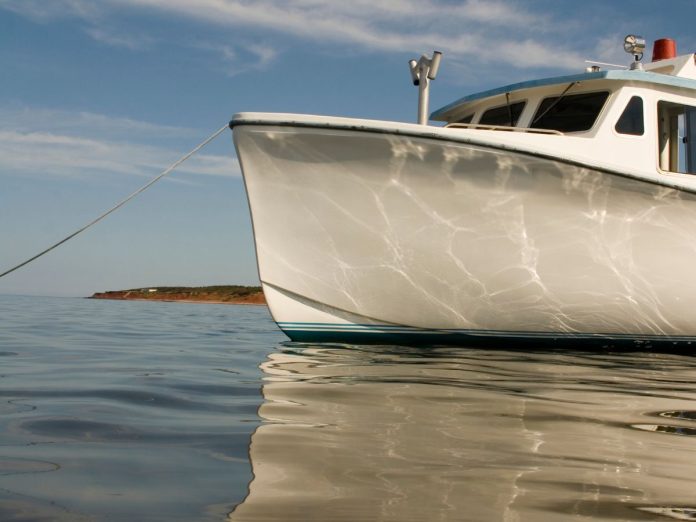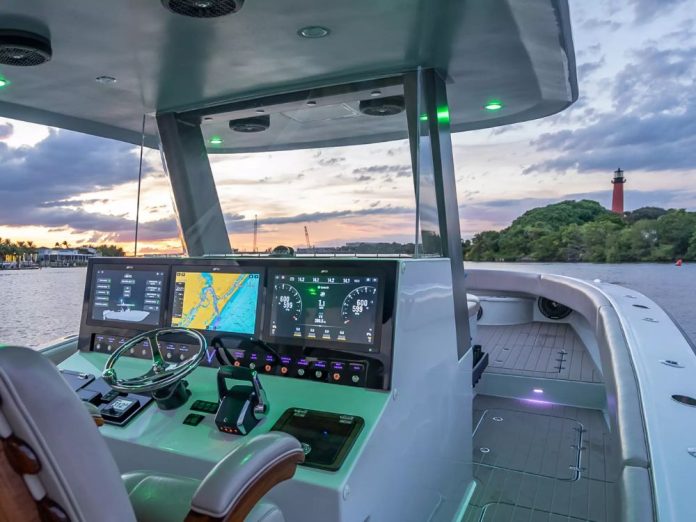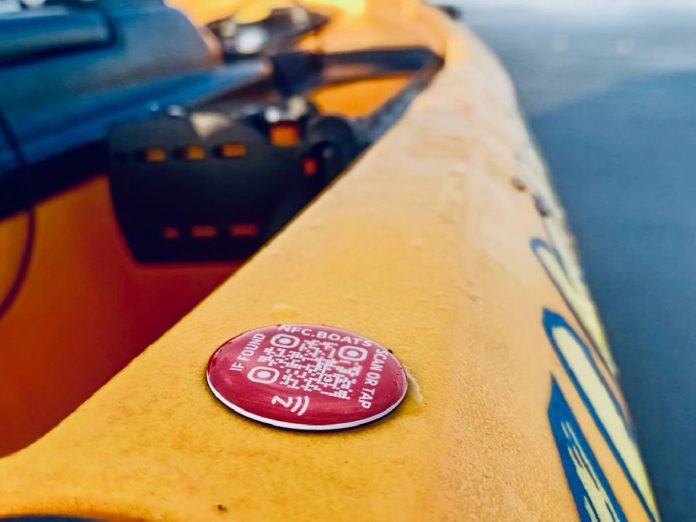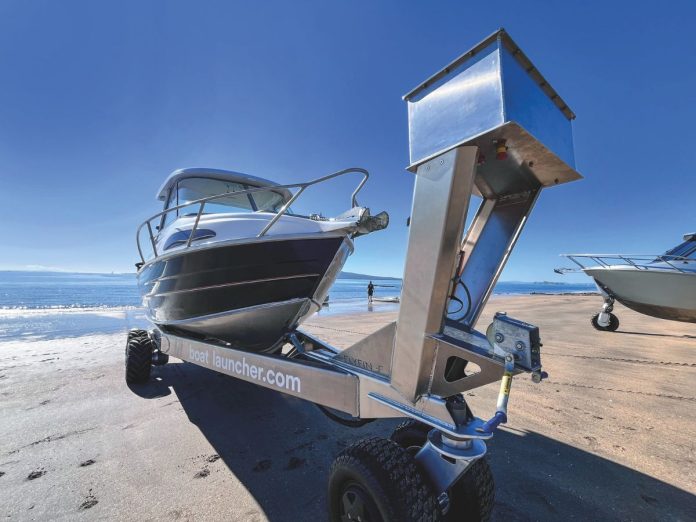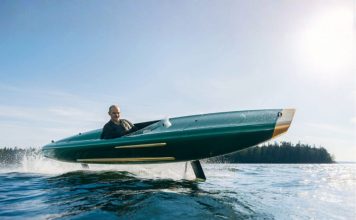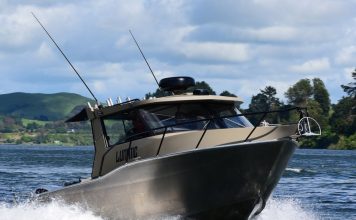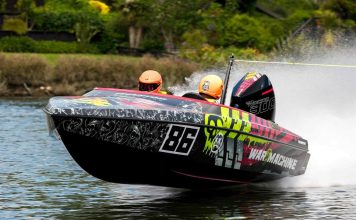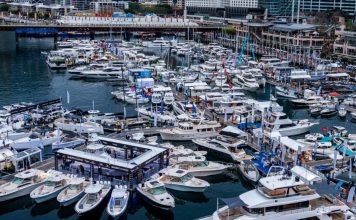When you anchor, are you doing it just to pause—or to let go? For cruisers heading ashore to explore, hike, bike, or disappear for hours, anchoring is more than a routine task. It’s a commitment of trust: in your gear, your seabed assessment, and the sea itself.
But even experienced sailors get caught out. Just ask Riley and Elayna from La Vagabonde, who famously had to sprint back from a shore ‘mountain’ trip when their catamaran began dragging anchor—caught in wind and tide and heading for open water. Their experience is far from unique. And it raises a core question: what kind of anchoring setup lets you leave the boat—and stay gone?
What makes the ideal anchor?
I’ve suffered anchor mishaps—as have we all. In an ideal world, I want an anchor that sets where I drop it—not 10, 15, 20 metres later. This is particularly important in a crowded anchorage; as is being able to put out a shorter chain length. As is an anchor that holds reliably in a wide range of seabeds: the rocky seabed at Great Barrier Island, sand at Hook’s Bay, mud at Islington Bay. And it doesn’t drag! Dragging is a nightmare particularly after a long sail and all I want to do is rest. Or at night when visibility is at its poorest.
The truth is, no anchor ticks every box perfectly. Even the best designs involve trade-offs—between setting speed, holding power, reset behaviour, and practical fit on your bow. Some anchors come close, but there’s always a compromise somewhere.
This article doesn’t cover anchoring techniques or set-and-forget tricks. Instead, we focus on the physical gear: anchors, and the critical role of matching them to the seabed.
Maritimo anchoring tips: safe anchoring and retrieval for luxury motor yachts
What are you anchoring for?
If you’re only dropping the pick for lunch or a snorkel, you can afford to keep half an eye on it. But longer shore trips—hiking trails, provisioning missions, overnight beach camps—demand a different level of security.
Your peace of mind starts with gear that suits your boat and the bottom you’re anchoring to. And this isn’t just about buying the most expensive anchor on the shelf. It’s about pairing anchor, chain, and rode to form a system that holds under pressure, absorbs shock, and resets reliably when the tide turns.
What lies below: seabed and anchor types
The seabed is as important as the anchor. If your anchor isn’t compatible with what lies below, even perfect technique won’t save you. Tip: The right anchor for a 30-foot monohull won’t necessarily work for a multihull or displacement cruiser. Consider boat type, windage, and intended cruising areas. For multihulls or high-windage cruisers, always size up. A 40ft catamaran may require an anchor rated for a 60ft monohull due to increased load in gusts and swing radius. Rely on the guides provided by each anchor brand to help you choose the correct size for your boat length and type.
Mud
These modern designs offer large surface areas and deep penetration, essential in soft bottoms. Tip: Size up when buying for mud—especially if you’re leaving the boat unattended. Mud offers the least resistance to anchor movement, so margin matters.
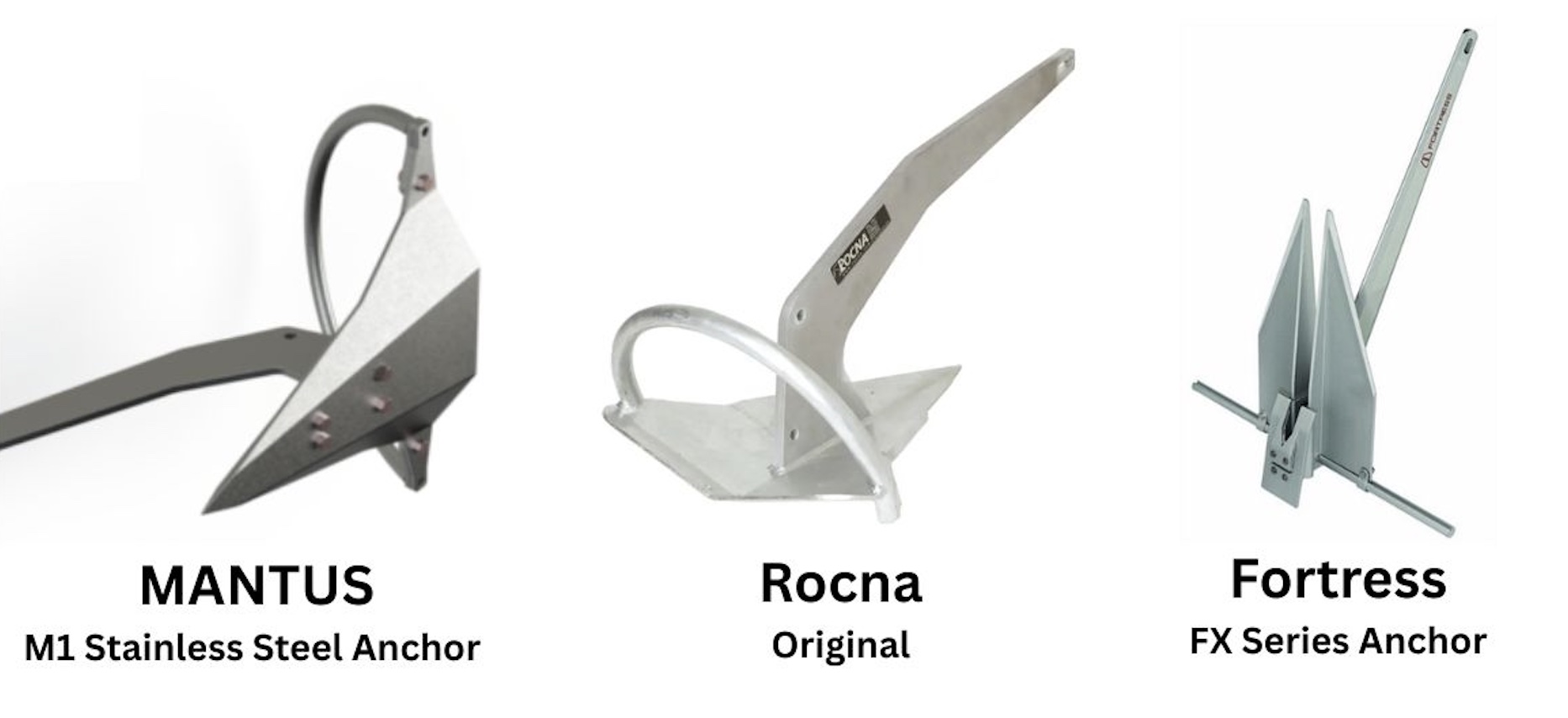
Anchor: Mantus M1
Mud holding power: ⭐⭐⭐⭐⭐
Roll bar: ✅
Notes: Outstanding deep set and hold. Practical Sailor’s long-term tests found that the Mantus consistently outperformed others in soft mud, burying deeply and resisting drag under load (source: Practical Sailor, 2020). Mantus anchors are more available in Australia.
Anchor: Rocna (OG)
Mud holding power: ⭐⭐⭐⭐½
Roll bar: ✅
Notes: Made in New Zealand and tested in New Zealand. The Rocna is good in tidal mud.
Anchor: Fortress FX Series (FX-16 and up)
Mud holding power: ⭐⭐⭐⭐⭐
Roll bar: ❌
Notes: Lightweight, unmatched in soft mud, less versatile
Anchor: Rocna Vulcan
Mud holding power: ⭐⭐⭐⭐
Roll bar: ❌
Notes: Rocna DNA, better bow fit
Anchor: Sarca Excel
Mud holding power: ⭐⭐⭐⭐
Roll bar: ❌
Notes: Versatile, regional option with good reviews
Sand
When anchoring in sand, you’re in luck—sand is one of the most forgiving seabeds. However, some anchors set faster, hold better, and reset more reliably than others. Sand is forgiving, but weed layers over sand can cause even good anchors to skate—scoop-style anchors like Rocna and Mantus are best in those cases. Tip: Always match anchor size to your boat’s displacement—and size up if you leave the boat unattended.

Anchor: Rocna (OG)
Sand holding power: ⭐⭐⭐⭐⭐
Fast setting: ✅
Notes: Best all-round performer for Kiwi cruisers
Anchor: Mantus M1
Sand holding power: ⭐⭐⭐⭐⭐
Fast setting: ✅
Notes: Superb hold, slightly bulkier to store
Anchor: Spade
Sand holding power: ⭐⭐⭐⭐½
Fast setting: ✅
Notes: Premium performance, custom storage may be needed. Spade S (Steel) is best for all-rounder / liveaboard, with maximum hold in shifting conditions but is heavier and harder to handle. Spade A (Aluminium) is best for light boats and as a backup anchor. It is the same shape, lighter than the S version but is still excellent in sand. You will need more scope or chain for shock absorption.
Anchor: Fortress FX Series (FX-16 and up)
Sand holding power: ⭐⭐⭐⭐⭐
Fast setting: ⚠️
Notes: Despite being a lightweight aluminium anchor, performs extremely well in sand due to sharp flukes and large holding area. Fortress can struggle in kelp or rocky bottoms. It’s great for sand but not an all-rounder. Ideal as a backup or storm anchor
Anchor: Delta
Sand holding power: ⭐⭐⭐⭐
Fast setting: ✅
Notes: Affordable, well-known option
Anchor: Sarca Excel
Sand holding power: ⭐⭐⭐⭐
Fast setting: ✅
Notes: Versatile design with good holding in sand
Weed/seagrass
Anchoring in weed or seagrass is notoriously difficult—even high-performing anchors can fail to penetrate through the tangled layers to reach firm holding ground. In these conditions, the key is using an anchor that can cut through vegetation and bite quickly with good point loading and sharp flukes. Tip: Use extra scope: 7:1 or more to improve setting angle. Slow, controlled setting and gentle reversing can help ensure proper hold. Once partially buried, use a higher rev. If unsure, move. No anchor works well in loose, floating weed over hardpan.
Anchor: Rocna (OG)
Weed penetration: ⭐⭐⭐⭐½
Reset ability: ⭐⭐⭐⭐½
Notes: Excellent all-rounder, reliable in moderate weed. The sharp toe and roll-bar help orient and drive the concave fluke into the bottom—even through light to medium weed. Excellent in mixed seabeds and moderate weed over sand or mud.
Anchor: Mantus M1
Weed penetration: ⭐⭐⭐⭐⭐
Reset ability: ⭐⭐⭐⭐⭐
Notes: Best-in-class point loading and penetration. Exceptional tip loading helps it punch through dense vegetation. The sharp, chisel-shaped nose can often ‘cut’ through weed better than many roll-bar anchors. Use extra scope and reverse gently to encourage deep set in thick weed. More available in Australia.
Anchor: Spade (S or A Series)
Weed penetration: ⭐⭐⭐⭐
Reset ability: ⭐⭐⭐⭐⭐
Notes: Strong hold once set, needs patience to dig in. Heavier, wedge-shaped fluke delivers good penetration through thin or patchy weed into underlying sand. Best for high-end cruisers wanting consistent performance across varied seabeds.
Anchor: SARCA Excel
Weed penetration: ⭐⭐⭐⭐
Reset ability: ⭐⭐⭐⭐
Notes: Good hybrid design, growing NZ user base. The leading edge is designed to help clear weed and orient the anchor quickly—popular with Australian and New Zealand boaters. Strong option for seagrass flats and kelp-affected anchorages. Mixed-use anchorages (weed, sand, mud.)
Avoid: Plough-style or Danforth anchors—they tend to skate or foul in weed.
Rock and coral
No anchor is truly ideal for bare rock, but Bruce/Claw anchors have a reputation for hooking into cracks and contours. Tip: Use a trip line or a grapnel anchor as a backup, especially in high-risk terrain.
Chain and rode: your anchor’s unsung partner
A high-performing anchor is only as good as the chain and rope behind it. And yet, many cruisers underinvest in this part of the system.
All-chain vs rope-chain combo
All-chain systems provide catenary (sag), which dampens motion and helps keep the anchor lying flat. For boats over 10 tonnes (10,000 kg), all-chain setups are generally preferred, especially if anchoring in swell or gusty anchorages.
Rope-chain combo systems are lighter and easier to handle without a windlass, but depend heavily on a strong snubber and careful chafe protection.
Chain size and strength
Use proof coil or high-test (G43) chain; G70 offers more strength but is overkill for many recreational users and can damage gypsies if mismatched. For example, a 12mm G30 chain on a 12-tonne cruiser offers sufficient working load—but if you go to G43, you can downsize to 10mm for similar strength with less weight. (Source: Lewmar and Maxwell Anchoring Guides, 2023.)
Does chain weight really help hold the boat?Yes—but it’s not the whole story. A heavier anchor chain plays a big role in keeping your boat secure, especially in calm to moderate conditions. Here’s how:
But weight must match your boat: A lightweight chain on a heavy boat does little to help. As a rough guide: Boats under 10 tonnes often use 8–10mm chain. Boats over 12 tonnes should step up to 10–12mm or higher-grade chain (like G43). In strong winds or surge conditions, catenary disappears—and your anchor and snubber become the most critical parts of the system. So yes—chain helps. But only when it’s the right weight for your boat, and used with the right anchor. |
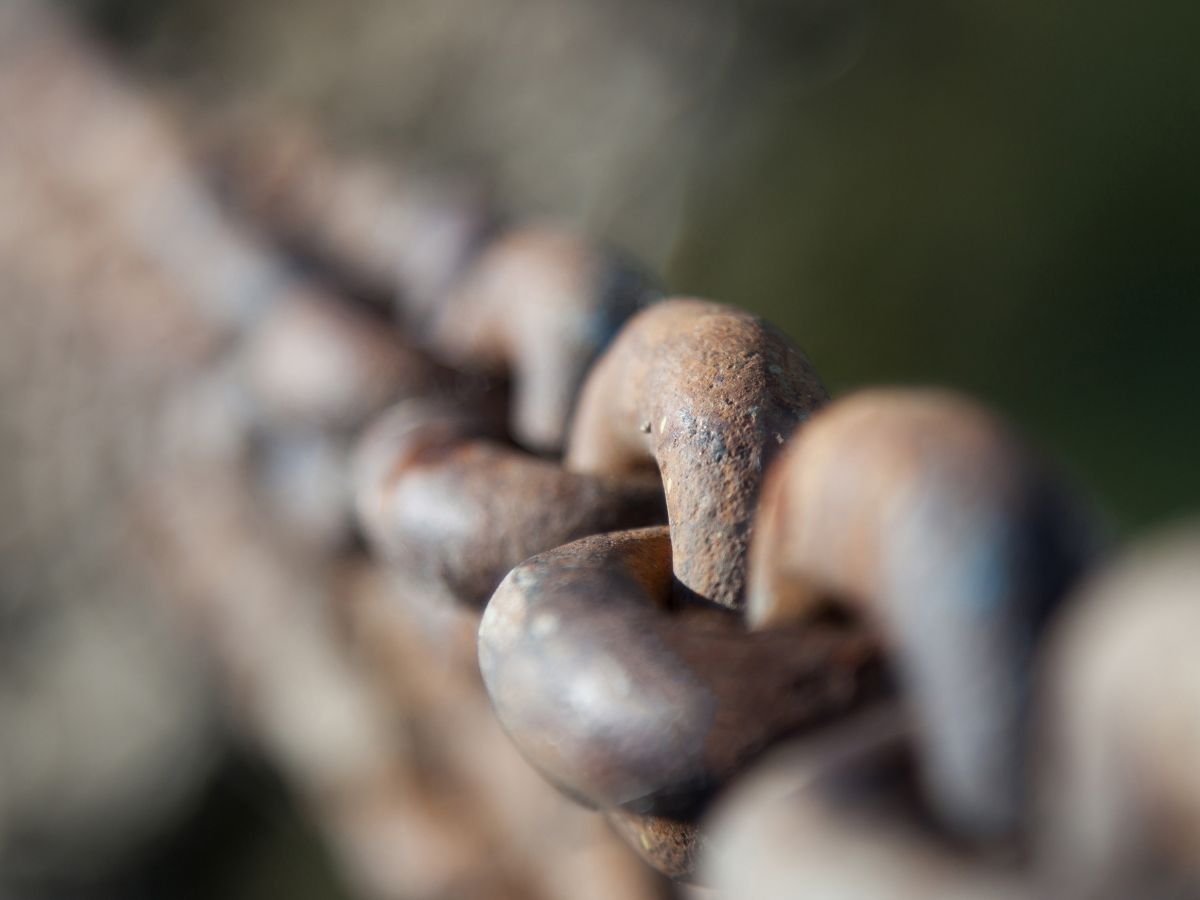
Snubbers and shock leads
Use a snubber of nylon rope with enough elasticity to absorb shock loads. Attach to a strong cleat, not the windlass. A 3-strand nylon snubber of 3–5 metres is ideal for most boats; heavier vessels may need twin snubbers.
When you’re leaving the boat: shore trip considerations
- Scope: Minimum 5:1 in calm weather; increase to 7:1 or 10:1 if expecting wind or swell.
- Kellets or Anchor Buddies: A weight lowered partway down the chain to improve catenary (sag), especially useful in short-scope situations.
- Second Anchor: For exposed anchorages, use a stern anchor or Bahamian moor setup to prevent swinging onto rocks or shallows.
- Anchor Watch Devices: Use anchor alarm apps (e.g., Anchor Pro, DragQueen) or a GPS tracker like Garmin InReach for remote alerts.
- Weather Check: Never leave the boat without reviewing tide charts and updated wind forecasts.
A drag-proof anchoring method – such a drag
Peace of mind is a system, not a shortcut
Choosing the right anchor and chain setup isn’t about finding the one magic product—it’s about building a system that suits your boat, your cruising style, and the conditions you’re anchoring in.
For New Zealand waters—where anchorages range from muddy estuaries to rocky bays—a modern scoop anchor (like a Rocna or Mantus), sized generously and paired with a high-quality chain and snubber, offers a strong foundation. And make sure you carry a secondary anchor; one that is just as effective. But gear is only one part. The rest comes from observation, preparation, and that sixth sense honed by time on the water.
So the next time you leave your boat and climb a ‘mountain’, make sure you’ve given it every reason to wait for you at the bottom.
Suggested reading and resources
Practical Sailor Anchor Tests (2020–2024)
Mantus Anchors Seabed Guide: mantusmarine.com
Rocna Anchors Seabed Guide: rocna.com
Maxwell Anchoring Guide: maxwellmarine.com
Fortress Anchors Holding Power Reports: fortressanchors.com
Drag Queen & Anchor Pro apps (iOS/Android)








